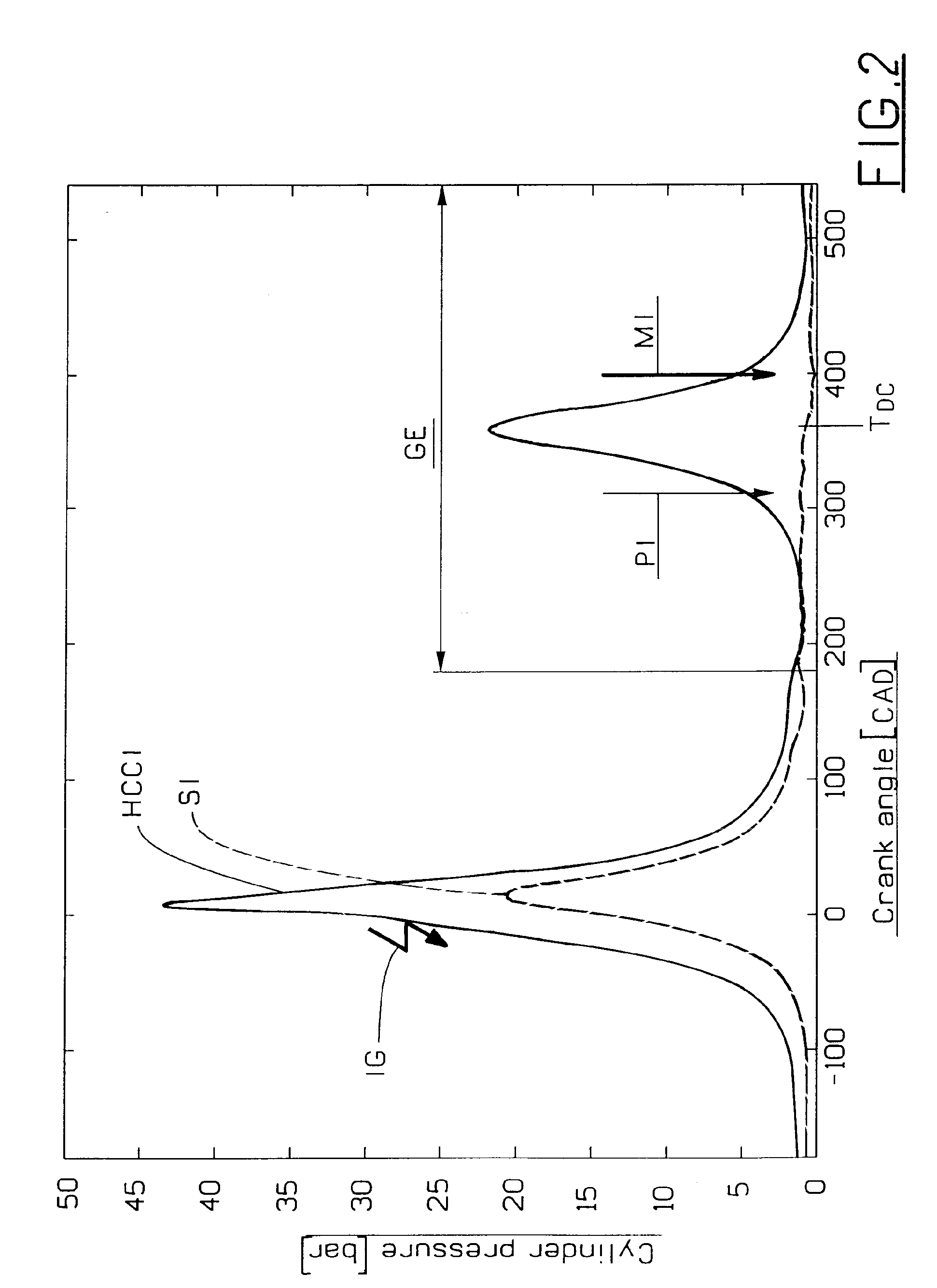Method for Auto-Ignition Operation and Computer Readable Storage Device for Use with an Internal Combustion Engine
a technology of internal combustion engine and auto ignition, which is applied in the direction of electrical control, process and machine control, etc., can solve the problems of limiting the range at which an engine can be operated with a lean air/fuel mixture, the auto ignition temperature is earlier, and the homogeneous charge compression ignition is difficult to achieve, so as to improve the thermal efficiency of gasoline internal combustion engine, reduce the effect of pumping loss and enhanced thermal efficiency
- Summary
- Abstract
- Description
- Claims
- Application Information
AI Technical Summary
Benefits of technology
Problems solved by technology
Method used
Image
Examples
Embodiment Construction
[0063]FIG. 1 shows a schematic illustration of an internal combustion engine according to the invention. The engine is provided with at least one cylinder 1 and comprises a fuel injector 2, through which fuel is injected into a combustion chamber 3, for each cylinder. A fuel injection control unit 4 controls fuel injection quantity per combustion cycle injected through each fuel injector. A piston 5 in the engine cylinder has a compression action that causes a mixture of air and fuel within the combustion chamber to be ignited during HCCI-mode. The cylinder is provided with at least one inlet valve 6 for admitting gas which includes fresh air into said cylinder and at least one exhaust valve 7 for exhausting combusted gases from said cylinder. Air is supplied through an intake conduit 9 connected to an intake manifold, while exhaust gas is exhausted through an exhaust conduit 10. During SI-mode, the ignition of the fuel / air mixture is ignited by a spark plug 8.
[0064] The control un...
PUM
 Login to View More
Login to View More Abstract
Description
Claims
Application Information
 Login to View More
Login to View More - R&D
- Intellectual Property
- Life Sciences
- Materials
- Tech Scout
- Unparalleled Data Quality
- Higher Quality Content
- 60% Fewer Hallucinations
Browse by: Latest US Patents, China's latest patents, Technical Efficacy Thesaurus, Application Domain, Technology Topic, Popular Technical Reports.
© 2025 PatSnap. All rights reserved.Legal|Privacy policy|Modern Slavery Act Transparency Statement|Sitemap|About US| Contact US: help@patsnap.com



